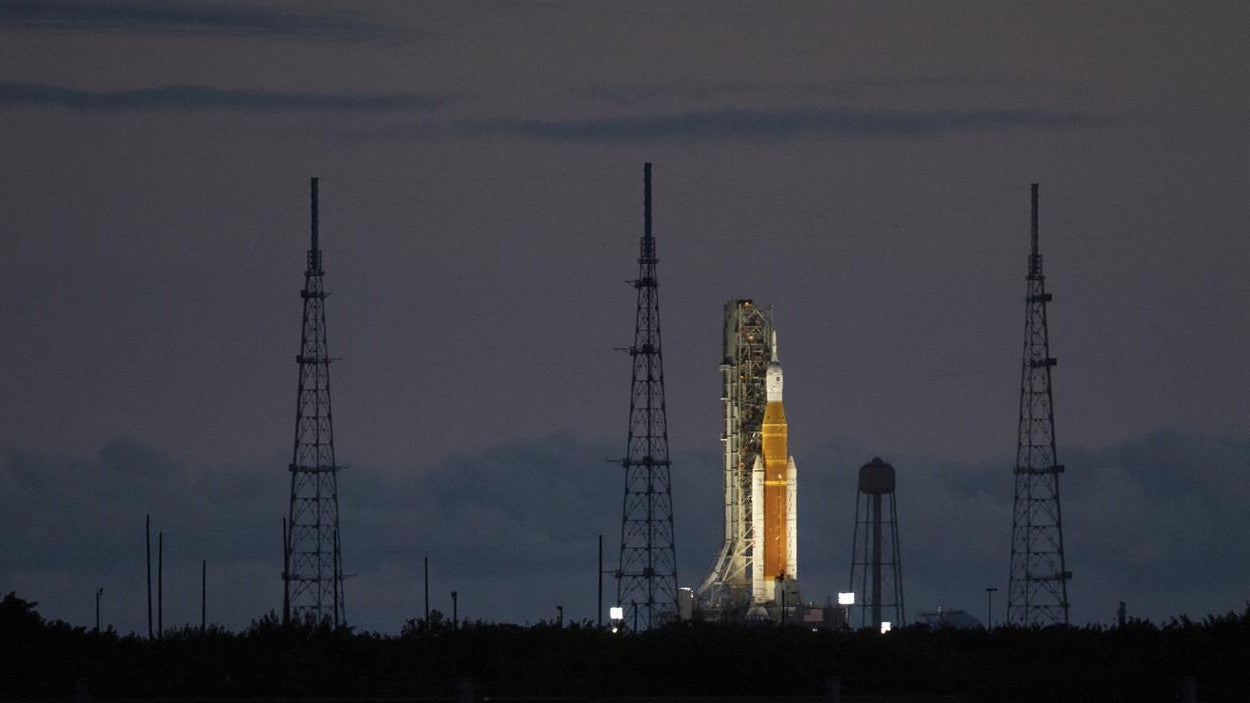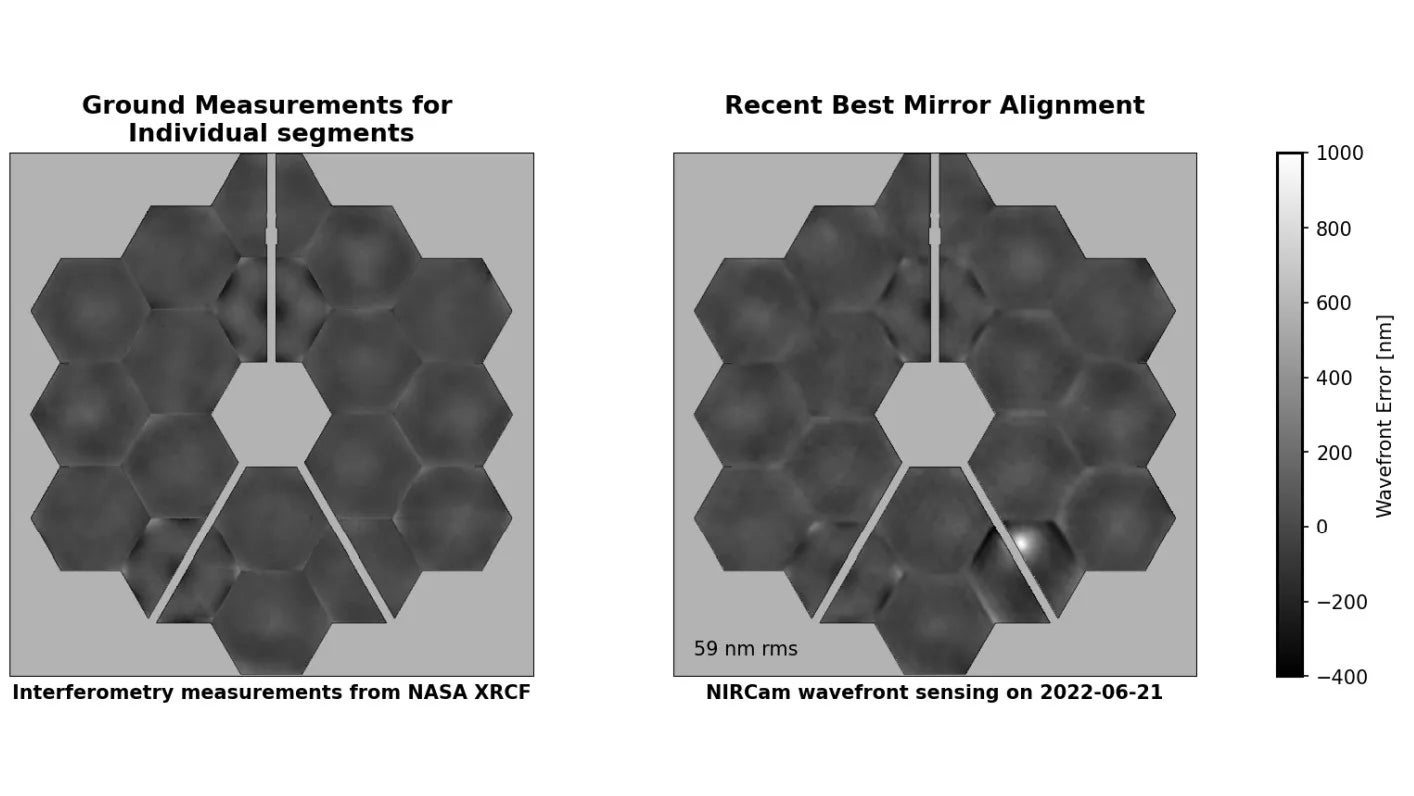NASA is going back to the Moon
Dear readers,


Dear readers,
Welcome to Quartz’s newsletter on the economic possibilities of the extraterrestrial sphere. Please forward widely, and let me know what you think. This week: We’re looking at a Moon launch, Falcon Heavy wins another payload, and what’s really going on behind those James Webb Space Telescope images.
🚀 🚀 🚀
After 18 years of work, NASA is finally prepared to demonstrate how it will take the next group of humans to the lunar surface. The US space agency is planning to launch an uncrewed mission to orbit the Moon as soon as Aug. 29.
The launch, known as Artemis 1, will kick off a multi-year campaign to explore the Moon. While much is known about the Earth’s nearest neighbor, the Apollo visits in the 1970s eschewed the most interesting locales for safety reasons. Since then, robotic exploration identified water ice on the Moon, which could enable longer stays and more science there.
Artemis 1 will be first launch of the Space Launch System (SLS) rocket, among the most powerful vehicles ever built, carrying the Orion spacecraft. After leaving the planet, the Orion spacecraft (with test mannequins Helga, Zohar, and commander Moonikin Campos onboard) will orbit the Moon autonomously, demonstrating its ability to carry humans safely into deep space—and bring them back.
The most important objective, per Mike Sarafin, the NASA exec in charge of the mission, will be to test the Lockheed Martin-built heat shield which protects Orion as it re-enters Earth’s atmosphere. Returning from the Moon, the vehicle will be going 24,500 mph, or about 32 times the speed of sound, and hitting the atmosphere at this speed will generate about half the heat of the sun. There’s no way to replicate those conditions on Earth.
The four to six-week mission is also expected to demonstrate that the launch vehicle and the spacecraft perform well in general, and that the environment of deep space, particularly with its higher levels of cosmic radiation, won’t affect Orion. It’s also a chance for the agency to practice recovering the spacecraft after splashdown, and launch some additional scientific payloads. If all goes according to plan, it will tee up a crewed lunar orbit, perhaps in 2025.
Caveat lector: Launch dates tend to move, especially during hurricane season in Florida. Still, that NASA is moving towards specific dates at all is an important step after rehearsals of SLS launch prep ran into more issues than expected. The success of this mission will be a step towards realizing NASA’s still amorphous Moon plans.
That’s hardly to say that all is proceeding apace. This week, we heard bad news about two companies that have been hired by NASA to send scientific payloads to the surface of the Moon in advance of human arrival.
NASA’s VIPER rover, originally expected to take off on a mission operated by the company Astrobotic next year, is now delayed until 2024. The space agency will pay the company an extra $70 million to perform more tests of its lander to make sure it works when the chips are down. This fretting isn’t a great sign, but added testing isn’t uncommon when NASA hires a private company as a service provider—we saw similar actions with SpaceX’s Dragon capsule.
Meanwhile, Masten Space, another firm with a NASA lander contract, appears to be on the verge of failure after furloughing its employees while searching fruitlessly for new investors. Parabolic Arc reports the company underbid NASA because executives thought the mission could also carry a private payload, but the reputed customers apparently backed out. It’s not clear yet what will happen to Masten, or its 2023 mission.
Still, there are eight other companies contracted for these missions, with Astrobotic’s first mission still scheduled for later this year. The reality is that NASA chose this model—hiring private companies instead of building these rovers itself—to pursue a higher-risk, higher-reward approach to exploration. That includes these Commercial Lunar Payload Services missions, as well as the pioneer satellite launched into a unique orbit between the Earth and the Moon last month.
These faster, cheaper missions are helping NASA fill in the blanks in their plans while the agency’s ponderous Moon rocket prepares for its first launch. But the real fun is just getting started: Before the first woman or person of color lands on the Moon, NASA will need spacesuits and a landing vehicle built by private companies, too.
🌕🌖🌗
The James Webb Space Telescope has generated some fascinating imagery, but this one is the most stressful—an analysis that shows the effect of a meteor that struck the telescope’s giant primary mirror. This image shows the expected operation of the mirror on the left and the current results on the right, with a white spot indicating the location of the damage.

Scientists knew that space debris would impact the mirror and have ways of realigning it to minimize problems, but the size of this strike has raised worries that the telescope’s hoped-for 20 years of operations could be shortened.
🛰🛰🛰
SPACE DEBRIS
Why not Mars? Relativity Space says it is partnering with Impulse Space (I am BEGGING founders to stop putting space in the company name) to launch a private mission to Mars. It’s not clear who would send payloads, but the two could hope to attract scientific customers. Reaching Mars on the cheap has long been a dream in commercial space transportation. Can this team realize it?
Why not Nancy? NASA awarded a $255 million contract to SpaceX to launch the Nancy Grace Roman Space Telescope in 2026. That’s attracted some attention because last year, SpaceX won a $178 million contract to launch a probe to Jupiter’s moon Europa in 2024. The extra cost could be explained by specific NASA requirements for the mission—or a price hike driven by the lack of other competitive rockets capable of flying the large telescope.
What goes into those arresting JWST images. The images we see from space telescopes are, in reality, data visualizations that draw on a complex combination of science, design, and history.
Russia’s erratic space leader is out of a job. Dmitry Rogozin, a key figure in Russia’s space program since 2011, has been replaced by member of parliament Yuri Borisov. Known for his wacky rhetoric and tendency to spout insults, Rogozin may not be missed by his counterparts around the world—but he may miss his old job, given rumors that he will play a new role in Russia’s invasion of Ukraine.
Starlink growing pains. As SpaceX rushes to add subscribers to Starlink thanks to its new approval for mobile users, residential users are complaining about increasing network congestion at peak times—perhaps a growing pain in the still incomplete network, but one that could signal more difficulties ahead.
The Pentagon isn’t done investing in space. The US military approved a $1.3 billion contract to purchase 28 prototype satellites to be used for early warning and tracking of hypersonic weapons.
Your pal,
Tim
This was issue 143 of our newsletter. Hope your week is out of this world! Please send your Artemis 1 launch forecasts, Starlink lag experiences, tips, and informed opinions to [email protected].